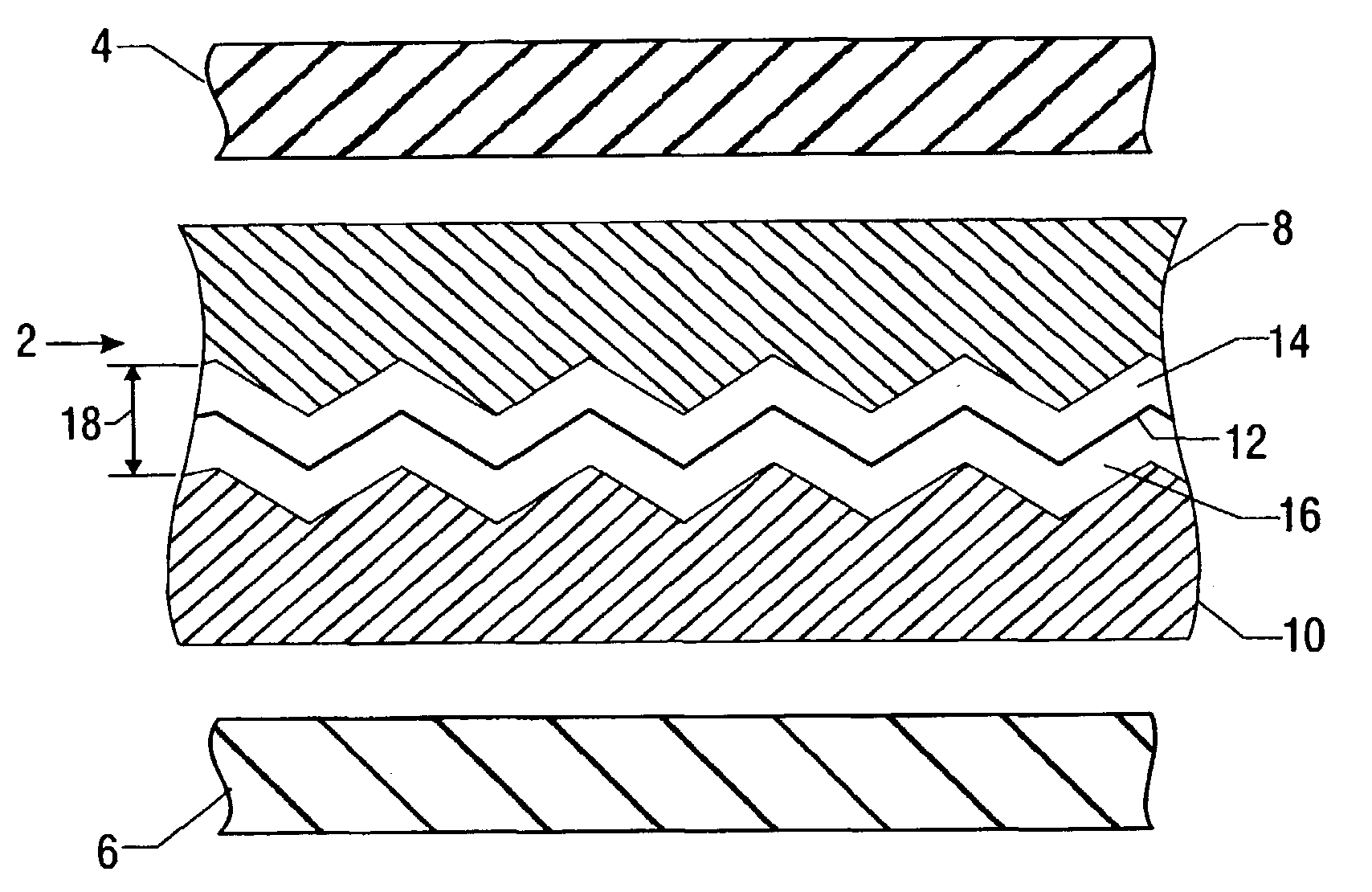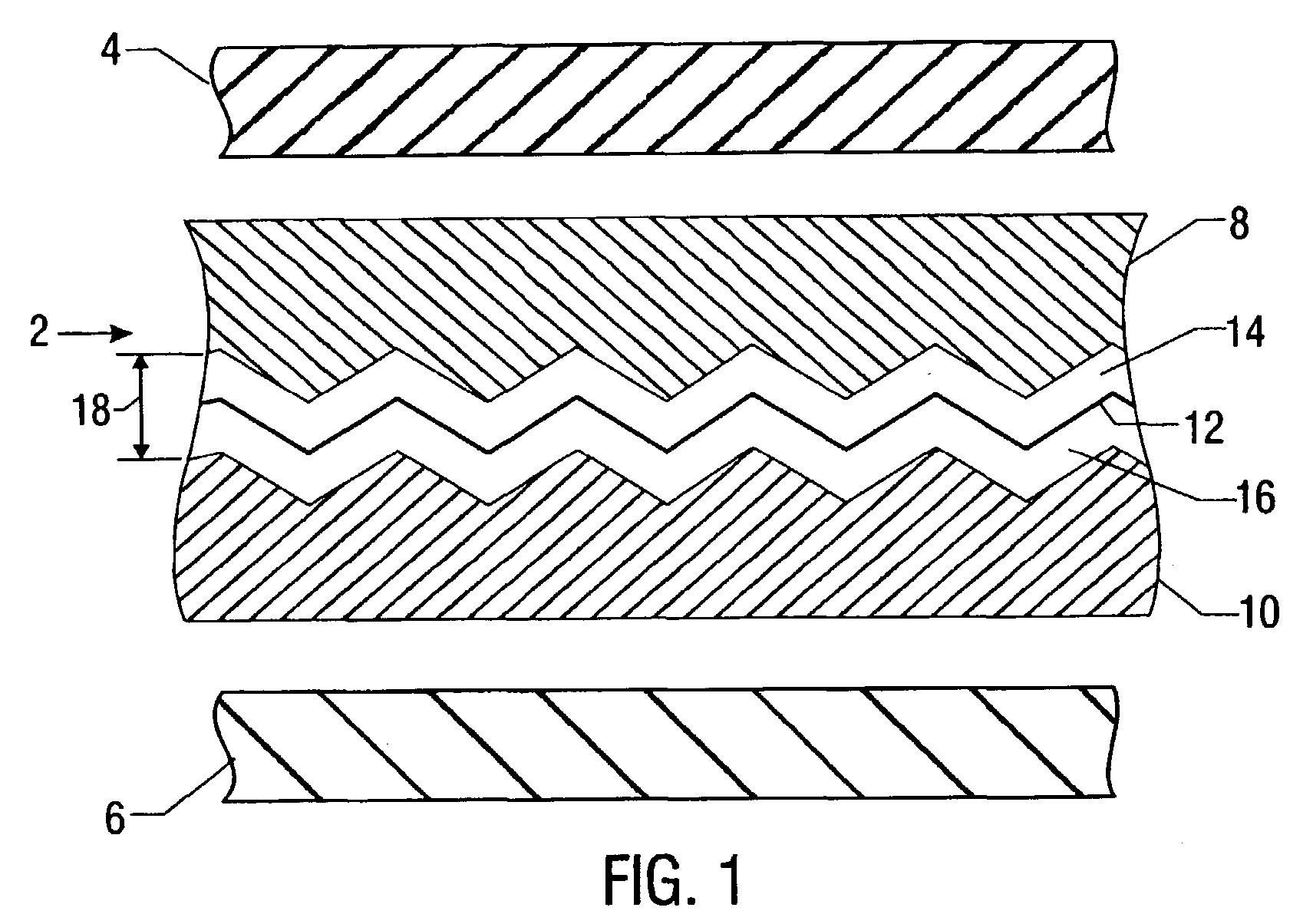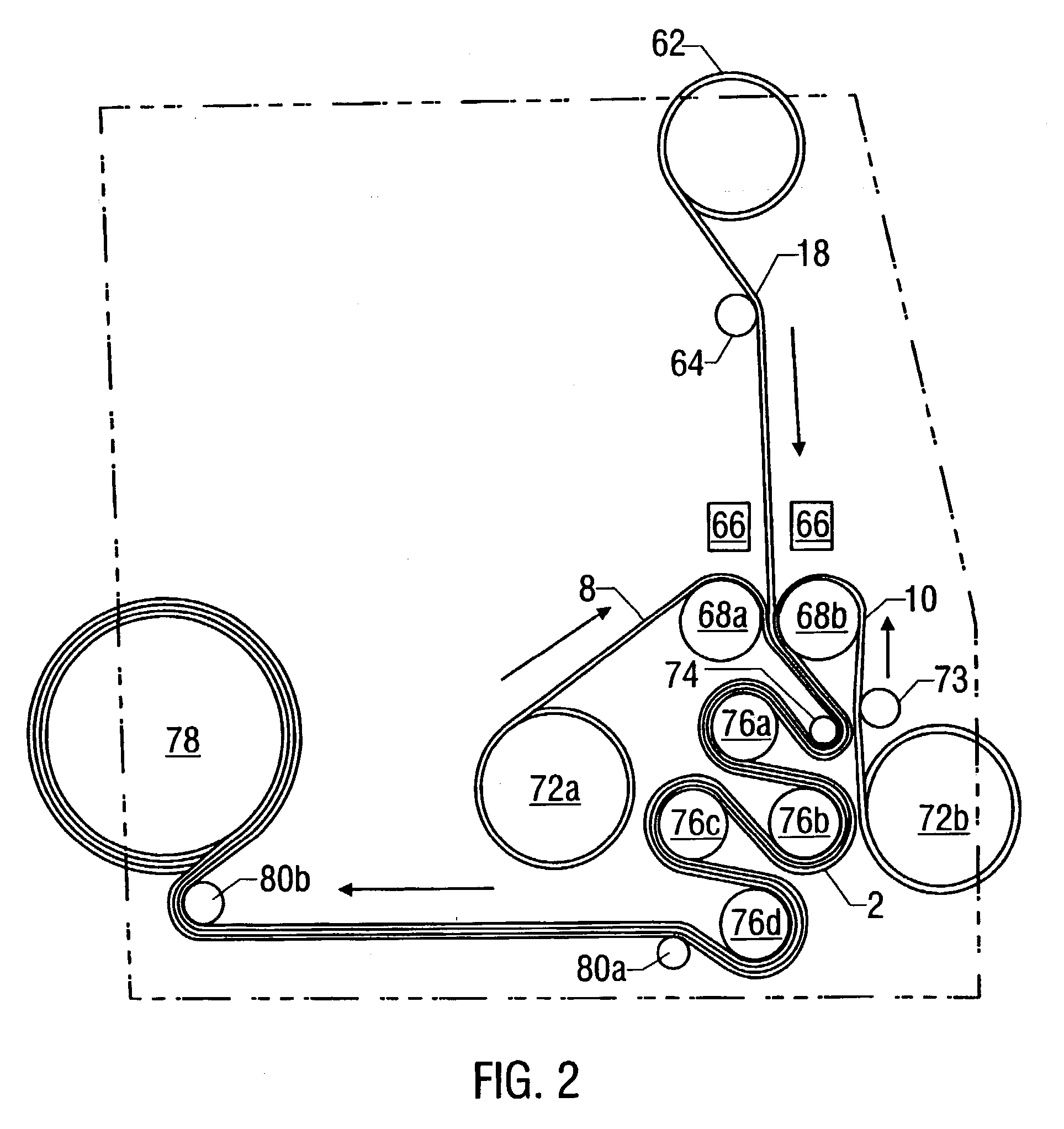Embossed reflective laminates
a reflective laminate and reflective film technology, applied in the direction of synthetic resin layered products, coatings, transportation and packaging, etc., can solve the problems of glass laminates that are not allowed by building codes, metal-coated glass with high visible reflectance is not desirable, and glass laminates that are commercially unacceptable, etc., to reduce uv and ir energy transmittance, easy observation, and minimize surface deformation
- Summary
- Abstract
- Description
- Claims
- Application Information
AI Technical Summary
Benefits of technology
Problems solved by technology
Method used
Image
Examples
example 1
Adhesion Treatment of PET Film Surface
[0044]Because the PET film did not have sufficient adhesion to PVB, one surface of each of the two rolls of PET was treated via a high vacuum “glow discharge” plasma using an argon / nitrogen gas mixture to achieve acceptable adhesion levels. Process energy input and line speed were selected to maximize PVB to PET adhesion without incurring significant yellowing of the PET film.
[0045]The 90° peel adhesion test was used to measure bond strength between plasticized PVB and PET film. Special peel adhesion laminates containing the PET film were prepared using standard laminating techniques by substituting the PET film for one glass piece of a standard double glass layered laminate.
[0046]The thickness of the plasticized PVB layer used was 0.030″ (0.76 mm) and it was dried for one hour at 70° C. prior to use to reduce moisture content to ensure that the adhesion of the glass / PVB interface was higher than that of the PET / PVB interface. The treated side o...
example 2
Coating of PET Film with Aluminum
[0049]A roll of film that had been plasma treated on one surface (Example 1) was loaded into the vacuum chamber for “metallization”. The pressure of the chamber was reduced using a series of vacuum pumps until the vaporization pressure of aluminum (6.7×10−2 Pa / 0.5 micron Hg) was reached. At this point aluminum vaporization was initiated by electrical resistance heating of the aluminum source and aluminum was deposited onto the untreated PET surface. Deposition rates were controlled to yield a coating thickness of ˜50 Angstroms.
example 3
Lamination of Metallized Film (→Decorative Composite)
[0050]In order to minimize the oxidation of the aluminum surface the roll of aluminum metallized film (Example 2) was laminated to the untreated surface of the second roll of PET film which had been previously adhesion promoted (Example 1). Using a conventional two ply coating / oven drying / nip roll laminating process, an isocyanate crosslinked polyester adhesive system was used to bond the aluminum coated surface of one film to the untreated surface of the other film to yield the decorative composite.
[0051]Visible transmittance of the laminated film was measured to be 31.4% using a Perkin-Elmer Lambda 900 spectrophotometer with a 150 mm diameter integrating sphere. The D65 Illuminant at 10° observer following was used for measurements.
PUM
| Property | Measurement | Unit |
|---|---|---|
| visible light transmittance | aaaaa | aaaaa |
| temperatures | aaaaa | aaaaa |
| thickness | aaaaa | aaaaa |
Abstract
Description
Claims
Application Information
 Login to View More
Login to View More - R&D
- Intellectual Property
- Life Sciences
- Materials
- Tech Scout
- Unparalleled Data Quality
- Higher Quality Content
- 60% Fewer Hallucinations
Browse by: Latest US Patents, China's latest patents, Technical Efficacy Thesaurus, Application Domain, Technology Topic, Popular Technical Reports.
© 2025 PatSnap. All rights reserved.Legal|Privacy policy|Modern Slavery Act Transparency Statement|Sitemap|About US| Contact US: help@patsnap.com



